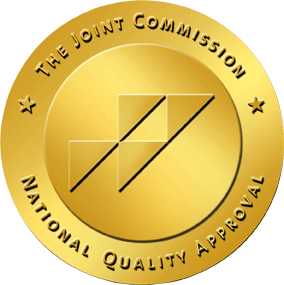Alcohol abuse is prevalent in the United States. Statistics show that 21.5% of Americans aged 12 and older binge drink within a given month. Further, 6.4% of adults engage in heavy drinking, defined as consuming more than 14 drinks a week for men or more than seven drinks a week for women. Heavy drinking places people at risk of developing an alcohol use disorder, which is the clinical term for alcohol addiction.
This resource guide is an overview of the information currently available on alcohol use and abuse. It offers general education about alcohol abuse, resources for high-risk groups and an introduction to strategies that can help prevent alcohol use disorder.
Resources for Alcohol Abuse
If you or a loved one are dealing with alcohol misuse, you should know that you are not alone on your journey. In fact, the National Institute on Alcohol Abuse and Addiction estimates that nearly 30 million people in the United States deal with alcohol use disorder (AUD).
Because alcohol abuse is such a prevalent issue, there are a number of resources available to you. We have collated some of the most valuable resources here for you and provided general information about alcohol misuse and alcoholism further below. If you have any questions or would like resources that are tailored to your situation or a loved one’s needs, please don’t hesitate to get in touch with one of our expert Recovery Advocates. They are available 24/7 to help connect you to resources in your area.
Local Alcoholism Resources
There are addiction resources available at the federal and state levels to help you get connected with local alcohol abuse resources.
This Season, Give Yourself the Gift of a Fresh Start.
Whether you are struggling with addiction, mental health or both, our expert team is here to guide you every step of the way. Don’t wait— reach out today to take the first step toward taking control of your life.
- SAMHSA’s National Helpline is a free and confidential referral service that can connect you or your loved ones to local resources. The helpline is available in English and Spanish and is available 24 hours a day, 365 days a year.
- FindTreatment.gov offers a searchable database of treatment facilities. All you have to do is enter your zip code, and the tool will return treatment options near you.
States and territories also have departments set up to assist with substance misuse, including alcohol.
A
Alabama Department of Mental Health
Alaska Division of Behavioral Health
American Samoa Department of Human and Social Services
Arizona Department of Health Services
Arkansas Division of Human Services
C
California Department of Health Care Services
Colorado Department of Human Services Office of Behavioral Health
Connecticut Department of Mental Health & Addiction Services
D
Delaware Health and Social Services
DC Department of Behavioral Health
F
G
Georgia Dept of Behavioral Health and IDD
Guam Behavioral Health and Wellness Center
H
Hawaii Department of Health, Alcohol and Drug Abuse Division
I
Idaho Department of Health and Welfare
Illinois Dept of Human Services, Division of Substance Use Prevention and Recovery
Indiana Division of Mental Health and Addiction
Iowa Department of Public Health, Division of Behavioral Health/Bureau of SA
K
Kansas Behavioral Health Services Commission, KS Department for Aging & Disability Services
Kentucky Department for Behavioral Health, DD/ID Disabilities
L
Louisiana Department of Health, Office of Behavioral Health
M
Maine Department of Health & Human Services
Marshall Islands Ministry of Health & Human Services
Massachusetts Department of Public Health
Michigan Department of Health and Human Services
Micronesia Department of Health and Social Affairs
Minnesota Department of Human Services
Mississippi Department of Mental Health
Missouri Department of Mental Health
Montana Department of Public Health & Human Services
N
Nebraska Department of Health & Human Services, Division of Behavioral Health
Nevada Division of Public and Behavioral Health
New Hampshire Department of Health and Human Services
New Jersey Counseling & Addiction Services
New Mexico Human Services Department
New York State Office of Addiction Services and Supports
North Carolina Department of Health and Human Services
North Dakota Behavioral Health Division Department of Human Services
Northern Mariana Islands Commonwealth Healthcare Corporation
O
Ohio Department of Mental Health and Addiction Services
Oklahoma Department of Mental Health and Substance Abuse Services
P
Pennsylvania Department of Drug and Alcohol Programs
Puerto Rico Mental Health & Anti-Addiction Services Administration
R
Rhode Island Department of Behavioral Healthcare, Developmental Disabilities & Hospitals
S
South Carolina Department of Alcohol & Other Drug Abuse Services
South Dakota Department of Social Services
T
Tennessee Department of Mental Health and Substance Abuse Services
Texas Health and Human Services
U
U.S. Virgin Islands Department of Health
Utah Department of Human Services, Division of Substance Abuse and Mental Health
V
Vermont Department of Health Alcohol and Drug Abuse Programs
Virginia Department of Behavioral Health & Developmental Services
W
Washington Department of Social and Health Services
West Virginia Bureau for Behavioral Health
Wisconsin Department of Health Services
Wyoming Department of Health, Behavioral Health Division
Resources for Assessing Alcohol Abuse Risk
These resources can help you determine whether you may be struggling with an alcohol use disorder:
- The National Institute on Alcohol Abuse and Alcoholism (NIAA) is a primary source of information about all aspects of alcohol-related issues. While its pocket guide was originally created for professional counselors and doctors, it can be a useful tool for individuals interested in assessing their risk of alcohol misuse or learning more about ways to control alcohol consumption.
- Nova Southeastern University in Florida offers a quick risk assessment in the form of 10 questions that can be completed in a couple of minutes. It uses the Alcohol Use Disorders Identification Test (AUDIT) to produce a score from 1 to 40. A different approach is taken by the Michigan Alcohol Screen Test (MAST), which includes 24 questions concentrating on the effects of alcohol instead of the quantity regularly consumed.
Resources for Self-Help Approaches to Alcohol Abuse
Those who think they are at some risk of developing an alcohol addiction may benefit from a self-help program:
- Rethinking Drinking: This NIAAA site provides a good resource for getting a grip on drinking behaviors. Finding alternatives and gaining an awareness of triggers are the starting points.
- Stop Drinking Alcohol: This website adopts a variety of approaches that can help you control alcohol consumption. It offers a guide to motivation, a set of three key principles, a 10-step guide to quitting and links to online support groups.
- Alcoholics Anonymous (AA): AA is the most well-known of the group support approaches to combating alcoholism. Many people have achieved a lifetime of sobriety as a result of the program.
- Healthline: Within this resource, you can find a roundup of recommended apps to aid those who are looking for a way out of alcohol dependency. There are various approaches, ranging from a simple consumption calculator to a 12-Step AA companion app.
Resources for Professional Intervention for Alcohol Abuse
Not everyone chooses to go down the self-help route for controlling alcohol — for many people, it’s almost impossible. These individuals typically find that the most effective approach is to seek professional help:
- The National Institute for Health and Care Excellence (NICE): NICE is the British government’s body for overseeing all aspects of public health care. This page is directed primarily at providers, but it gives a thorough overview of the options that are open to professionals and the standards of care that should be expected.
- NHS Guidance: Another British National Health Service site, this page provides a good summary of the alcohol addiction treatments available and also gives a brief description of withdrawal symptoms.
- Professional Help Options: This NIAAA site considers the options for professional help, conveniently listing the approved medications and the different types of counseling therapies. It also stresses the importance of involving primary care professionals in the process.
- Medication: Look here for a brief introduction to the various medications that are used to treat alcohol addiction.
- National Institute on Drug Abuse: This page has links to informative guides that discuss commonly used behavioral approaches to addiction treatment. Each section has a summary of the research involved.
- American Psychological Association: This site has an introduction to the subject of alcohol addiction from a psychologist’s point of view, as well as a brief description of available therapies.
- U.S. National Library of Medicine: The library contains a number of research papers on alcohol and other addictions, including an in-depth review of the treatments available.
Resources for Young People and Alcohol Abuse
Although there is hopeful evidence that alcohol misuse by young people is decreasing, it remains a serious risk for adolescents and young adults:
- The NIAAA has a detailed analysis of the prevalence, causes and effects of underage drinking in the U.S. It recognizes the phenomenon as a serious issue and considers strategies for prevention and containment of the trend, as well as the role that parents can play.
- The National Council on Alcoholism and Drug Dependence (NCADD) has a page directed at young people. This resource can help young people understand the causes and effects of alcohol misuse and evaluate their risk of addiction.
- The Centers for Disease Control and Prevention (CDC) has a number of informative fact sheets, including one on underage drinking that is backed by national surveys and research papers.
- A helpful guide for families is included among the Surgeon General’s “Calls to Action.”
Resources for Older People and Alcohol Abuse
Unfortunately, rates of alcohol misuse for those in retirement appear to be on the rise:
- The Royal College of Psychiatrists, a British institution, has a page that summarizes the nature of alcohol misuse and explains why older people may be particularly susceptible.
- The National Institute on Aging presents clear, comprehensive information about the risks that older people face as a result of habitual drinking.
Resources for Families and Alcohol Abuse
Living with a person who is dependent on alcohol can take a great toll on family life, and it can also be very destructive to friendships. Fortunately, help is available for friends and family as well.
- Al-Anon is a voluntary organization for those affected by the drinking of people close to them. It works mainly through group meetings that allow members to support each other. There is a parallel program for teenagers called Alateen.
- NACoA: Voice for the Children is a charity that seeks to help the children of people addicted to drugs or alcohol. It is a membership organization that gathers information and sponsors programs to help affected children.
Understanding Alcohol Abuse
There are a number of terms in circulation that refer to the misuse of alcohol, including alcohol abuse, alcohol addiction, alcohol use disorder, alcoholism, alcohol dependence and more. Generally speaking, alcohol misuse refers to binge drinking and heavy or excessive alcohol use. Frequent or repeated instances of binge drinking or excessive alcohol misuse may then be diagnosed as an alcohol use disorder.
What Is Alcoholism?
Alcoholism is a common term, but it isn’t actually a medical diagnosis. When people talk about alcohol addiction, they are actually referring to alcohol use disorder, which is a clinical term. When used to describe alcohol use disorder, alcoholism is a medical condition that causes lasting changes to the brain and makes it difficult to quit drinking.
Is Alcohol Abuse the Same as Alcoholism?
Alcohol misuse and alcoholism are not synonymous — that is, they may refer to different situations. Alcohol misuse is a broader term that may include what people colloquially refer to as “alcoholism,” but the abuse of alcohol does not necessarily mean that someone has an alcohol use disorder or alcoholism. According to the National Institute on Alcohol Abuse and Alcoholism, repeated instances of alcohol misuse and abuse “increase the risk of AUD,” or alcohol use disorder.
What Distinguishes Alcohol Dependence from Alcohol Abuse?
Under the realm of alcohol addiction are the issues of dependence and abuse. To understand the difference between these two, it is helpful to have definitions of both terms. As the National Institute on Drug Abuse (NIDA) explains, dependence occurs when the body adapts to the presence of a substance and then goes through withdrawal symptoms when the substance is taken away. Someone who is dependent on alcohol will not function the same without it because their body eventually comes to rely on alcohol.
On the other hand, alcohol misuse does not necessarily lead to dependence. Alcohol misuse occurs when people drink more than what is considered drinking in moderation. For instance, experts define moderate drinking as up to one drink per day for women and up to two drinks per day for men. Repeatedly exceeding this intake with the intent to relieve stress or cope with emotions constitutes alcohol misuse. Binge drinking, defined as five or more drinks in one sitting for a man and four or more for a woman, also constitutes alcohol misuse.
While people can abuse alcohol without becoming dependent on it, the reality is that alcohol misuse increases the risk of dependence. Over time, people who abuse alcohol can begin to develop a tolerance, meaning they will need larger and larger quantities to get the same effects from drinking. As alcohol use increases, ongoing abuse can lead to dependence.
Is Alcoholism a Disease?
Alcoholism is the colloquial term for an alcohol use disorder, which is the clinical term for alcohol addiction. Alcohol use disorder is a legitimate medical condition (i.e., disease) that causes changes in the brain and leads to compulsive alcohol consumption. When a person has an alcohol use disorder, they lose control over their drinking and will continue to consume alcohol, even when it comes with consequences.
Is Alcoholism Hereditary?
The risk of developing alcohol use disorder or alcoholism is higher among people who have a family history of the condition, which suggests that it is at least partially hereditary. A research report that analyzed 17 different genetic studies found that the heritability of alcohol use disorder is 0.49. This means that genes explain about half of a person’s risk of developing alcoholism, while the other half is dependent on the environment.
What Causes Alcoholism?
Genetics explains about half of a person’s risk for developing an alcohol use disorder, and the rest is up to environmental factors. For example, experiencing childhood trauma, growing up around parents who drink and beginning to consume alcohol before age 15 all increase the risk of alcoholism. When someone with a high genetic risk is surrounded by environmental risk factors, an alcohol use disorder can develop after repeated alcohol misuse.
When Does Drinking Become a Problem?
Enjoying a drink on special occasions or drinking in moderation can be a part of a healthy lifestyle. On the other hand, drinking becomes a risk when someone misuses alcohol and begins to show signs of alcoholism. Continuing to consume alcohol in the face of ongoing consequences, such as the inability to function at work or care for a family, is suggestive of unhealthy drinking. Even when someone doesn’t meet the criteria for an alcohol use disorder, repeated alcohol misuse can become dangerous because it can lead to motor vehicle accidents, injuries, violence, alcohol poisoning and risky sexual behavior.
Signs of Alcoholism
Some signs of alcohol use disorder include lying about drinking, denying the severity of the behavior, drinking in secrecy and isolating from others as a result of alcohol use. Someone who develops alcoholism may begin to have problems at work or show changes in usual mood or behavior.
If you are struggling with alcohol addiction, we are here for you.
Alcoholism Symptoms
When someone develops an alcohol use disorder, they will show certain symptoms that meet the criteria for this condition. Symptoms can include:
- Strong alcohol cravings
- Drinking larger amounts than intended
- Being unable to cut back on alcohol use, even when there is a desire to do so
- Giving up other activities in favor of drinking
- Spending a significant amount of time drinking or seeking out alcohol
- Continuing to drink despite consequences like being unable to work or having relationship problems because of alcohol
- Developing a tolerance and/or suffering from withdrawal symptoms when not drinking
- Drinking when it is dangerous or causes a health problem
How Hard Is It To Quit Drinking?
For people who do not have an alcohol addiction, giving up drinking may not be particularly challenging. A person may cut out alcohol because they notice that they don’t feel well after drinking, or they’d like to commit to a healthier lifestyle. For someone who has alcoholism or an alcohol use disorder, however, it can be extremely challenging to stop drinking. This is because an alcohol use disorder causes lasting changes in the brain that lead to compulsive drinking. Alcohol withdrawal symptoms can also be uncomfortable, leading people to return to alcohol use to avoid going through withdrawal.
Alcoholism Treatment: An Alcohol Rehab Guide
If you or someone you love shows signs of an alcohol use disorder, it is probably time to seek treatment. Learning the answers to commonly asked questions about rehab can give you a better understanding of how alcohol addiction treatment can help.
What Is Rehab?
Short for “rehabilitation,” the term “rehab” is typically used to refer to addiction treatment programs. When you think of rehab, you probably imagine a residential treatment program where people live away from home for a period while undergoing treatment. While this is one form of rehab, there are other options available.
How Does Rehab Work?
While in a rehab program, people work with a team of addiction professionals to heal from addiction and learn how to cope with stress and other triggers. They participate in a variety of services, which can include individual and group counseling as well as case management services and medication management.
When Is Rehab Necessary?
Since addiction can lead to uncomfortable withdrawal symptoms when a person tries to stop using substances, rehab is often necessary for people who are living with an addiction. In the case of alcohol misuse, if you continue to drink despite negative consequences or are unable to stop drinking even though you want to, you likely have an alcohol use disorder. This means that it is probably time to seek rehab to help you overcome the negative effects of alcoholism.
What Types of Rehab Facilities Are There?
When you’re looking for treatment for an alcohol addiction, there are several options available. The two most common forms of alcohol rehab are inpatient and outpatient treatment.
Inpatient Alcohol Rehab
Inpatient rehab programs require patients to live on-site at a treatment center while undergoing treatment. If you’re in an inpatient alcohol rehab, you will leave home and stay at a facility for a period of time. While there, you can expect to participate in individual and group counseling. You will also meet with a team of professionals who will monitor your progress, provide case management and prescribe medications as needed.
If you’re having difficulty maintaining sobriety in the community or you do not have a supportive living environment, inpatient alcohol rehab may be a suitable choice.
Outpatient Alcohol Rehab
In contrast to inpatient rehab, outpatient alcohol rehab allows patients to live at home while undergoing treatment. They attend appointments for individual and group therapy and case management at a treatment center and then return home afterward. Outpatient programs are a good fit for people who need to continue working or remain at home to care for children.
Some people may complete an inpatient program and then transition to outpatient rehab after establishing a period of sobriety. There are several forms of outpatient rehab available. For example, intensive outpatient services involve nine or more hours of care per week, while standard outpatient care provides fewer weekly service hours.
What Happens in Rehab?
When you begin a rehab program, a treatment team will perform an assessment to determine your specific needs and then develop an individualized treatment plan. They will ask questions about your health history, family/living situation, history of drug and alcohol consumption, current substance use and any problems you are experiencing as a result of alcohol addiction.
Once a treatment plan is formulated, you will participate in a variety of therapeutic services to help you overcome the problems that led to addiction. You will work toward goals like maintaining a period of sobriety, managing stress in healthy ways and finding ways to cope with triggers without drinking.
Finding a Rehab Center
Some people prefer to attend treatment centers close to home, while others may want to attend an inpatient rehab far from home so they have a change of scenery as they enter recovery. If you’re searching for a rehab program, the Substance Abuse and Mental Health Services Administration provides an online search tool so you can locate treatment facilities.
For those looking for alcohol rehab in central Ohio, The Recovery Village Columbus Drug and Alcohol Rehab offers comprehensive services. You can begin in our medical detox program to receive support as your body withdraws from alcohol, then transition to an inpatient or outpatient program for intensive treatment.









